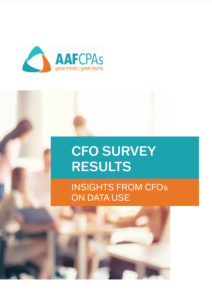Pay for Success: a funding model with data at its core
There is at long last solid momentum gathering behind the pay-for-success (PFS) model of funding socially oriented projects and services: a shift in approach that emphasizes outcomes rather than activities. Through PFS contracts, the ecosystem of investors, government, and service providers is working together to create new opportunities and meet more impactful social goals.
PFS provides benefits for all involved, but in order to access funding opportunities, nonprofit service providers will need to be prepared for some fundamental changes. In particular, the way that data is shared and applied to measure success is key to the spirit of experimentation and innovation inherent in the model.
The way that socially geared services are funded is certainly undergoing change from its typical roots in philanthropy and government funded grants. The Brookings Institution notes that state and local government revenues are projected to decline by $167 billion in 2021 and $145 billion in 2022. That gap creates demand for creative models that address social issues and leverage private investment dollars.
While still in its early days, PFS is poised to close that gap with impact bonds and other financial structures. “27 impact bonds have been launched in 14 states and the District of Columbia, with California, Colorado, and Massachusetts leading the way with four projects each,” reports Brookings. “Over 750,000 Americans have benefited from impact bonds addressing issues ranging from homelessness to improving child welfare to reducing prison recidivism.”
In a recent AAFCPAs snap poll, 177 participants in a seminar for nonprofits identified finding investors (33%) and data readiness (21%) as the biggest perceived challenges for participating in a PFS initiative.
The first concern – sourcing investments – is commonly perceived as a roadblock. However, the truth is that with impact bonds and PFS programs gaining steam, there are swaths of investment managers seeking out measurable, impact-driven opportunities to add to their portfolios. Government sponsors embrace the inflow of these private dollars, as it allows them to test scalable solutions and reward providers without taking undue risk.
The second concern – data management – is a more complex issue. Participants in PFS need to accurately measure and evaluate whether shared goals are being achieved. Providers, investors, and government sponsors regularly convene to discuss progress and the scalability of best practices. That requires everyone to be working with the same information.
The good news is that in the PFS ecosystem, providers have access to troves of government data relevant to specific programs. Providers can learn from that data and make adjustments to the program without being held back by limitations of restricted grants or the administrative burden of budget amendments.
The pitfall lies in managing, interpreting, and presenting the data in a way that supports decision making. For most nonprofits, this signals a sea change in data management and data analytics requirements.
 Provider organizations should assess their data management and data analytics processes to determine whether they have the infrastructure in place to get value from the data. This includes data managers focused on the acquisition and preparation of data, as well as data analysts with expertise in mathematical operations, data visualization, and statistical modeling.
Provider organizations should assess their data management and data analytics processes to determine whether they have the infrastructure in place to get value from the data. This includes data managers focused on the acquisition and preparation of data, as well as data analysts with expertise in mathematical operations, data visualization, and statistical modeling.
Their approach should consider four types of data, all equally important to decision-making:
- Descriptive (Historical) analytics provide insight into the past and answer Key Business Questions (KBQs) related to: “What happened?” Analysts interpret and parse historical data to better understand changes that have occurred over a set period.
- Predictive analytics provide insight into the future and answers KBQs related to: “What will happen?” Analysts utilize predictive analytics to forecast patterns among program participants, potential risks, and likely opportunities.
- Prescriptive analytics provide insight into possible outcomes and answer KBQs related to: “What do we need to do to make things happen?” Analysts utilize data and hypothetical actions/situations to model a series of possible outcomes. They then illustrate actionable paths that could lead to these outcomes. This helps identify the optimal path to a desired outcome.
- Compliance analytics provide insight into how well an organization conforms to relevant laws, policies, and regulations. Analysts utilize data to ensure organizations are within tolerance of applicable contracts or statues. In PFS, compliance data helps determine whether the program is operating within the guidelines of the contract.
At the broadest level, PFS is about determining the best outcomes and allocating resources to drive them, rather than funding a set of activities with the hope of achieving progress. When the government, investors, and providers align around such tangible, measurable goals, substantial progress can be made. Data is the tie that binds the programs together, and all parties should be ready to put their best analytics foot forward.
AAFCPAs’ 2021 CFO Survey Finds Data Management is Catalyst for Change. CFOs seek better inputs, predictability, and the talent to translate date… Read more insights from CFOs on data use.>>
If you have questions, please contact Jeff Cicolini, CPA, CGMA, Partner and Leader of AAFCPAs Human & Social Services Practice at jcicolini@nullaafcpa.com, 774.512.4026; Vassilis Kontoglis, Director of IT Security and Data Analytics at vkontoglis@nullaafcpa.com, 774.512.4069; or your AAFCPAs Partner.
